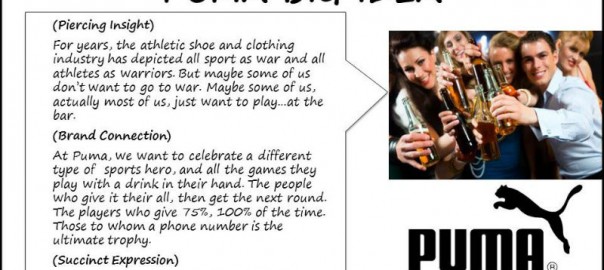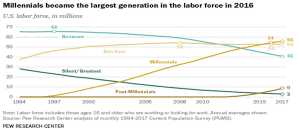Looking to come up with the next “big idea” for your brand? Columnist Peter Minnium reveals some key components of effective creative ideas.

“Are you kidding?!” exclaimed the major global agency creative director. “That’s not your idea!” She had been sitting quietly at the BuzzFeed offices listening to a credentials presentation but could not hold her tongue when the first advertising case study was presented. It turns out that BuzzFeed had created a very successful listicle for a client of the global agency.
BuzzFeed was proud of their work and success, and they were rightly showing it off. The creative director took offense, explaining that it took her a full year of research, creative exploration and ultimately, salesmanship to get the client to approve a “big creative idea” — and she was shocked to see BuzzFeed taking credit for it.
Her response should have been the exact opposite; instead of being disappointed to see her idea “stolen,” she should have been delighted that the idea she created for the client was strong enough to be successfully implemented by a third party — in this case, a social media company’s internal creative team.
(I think she was more sore about the economics of the situation than the loss of intellectual property; chances are that BuzzFeed, as a media company, made a lot more money than the agency had with its creative services model — but that’s a topic for another article.)
Cultivating A “Big Idea”
The fact is that the role of creative agencies — in uncovering an insight, birthing a “Big Idea” and expressing this in a series of executions as a campaign — has never been more important.
In the old days of analog media, an agency was responsible for the entire communications supply chain, the sequence of processes involved in the creation, production and distribution of advertising. Agencies controlled not only the creation of the campaign idea, but also all of its manifestations and often the media delivery to the end consumer.
In today’s digital world, the brand marketers and their agencies control a much smaller piece of the communications supply chain. Digital advertising has enabled a level of interaction and dialogue between marketers, consumers and the media whereby the three are becoming equal partners in the advertising experience — often as co-creators.
While there is no one-size-fits-all scenario, today the brand and its agency typically control the first part of the communications supply chain, the media the second and the consumer the third.
Specifically, the brand and agency will create a Big Idea and a handful of executions that bring this idea to life in paid advertising; more and more, media owners will then create additional content (often “native”) for the brand, building on the agency’s work; and finally, consumers will respond and share their interpretations, creating “earned” media for the brand.

While some brands lament this loss of control, the majority realize the potential for nearly limitless amplification of their core media spend. At the same time, they recognize that the chance for outsized rewards doesn’t come without risks, and rarely does a week go by without a story of a digital campaign going wrong, usually because the creative idea was weak or absent.
Nor does the potential for outsized rewards come without more and harder work. While the brand and agency only control the first part of the communications supply chain, this is the most important one, as their contribution provides the foundational communication platform — the Big Idea at the center of the advertising experience, upon which all creative, paid, owned or earned, is created.
When the communications platform, the Big Idea, is done right, it is natural for the media and consumer to create and share compelling, relevant, “on-strategy” content that lifts the brand and its sales.
Brands and their agencies invest mightily to create Big Ideas, and they should, as these can become incredibly valuable assets. In today’s digital media world, in which the brand and agency no longer control the entirety of the communications supply chain, of equal if not greater importance is codifying and communicating the Big Idea so that other creators farther down the chain can accurately express it.
This is easier said than done. Agencies, after all, are not used to handing off their Big Ideas to others, as for the majority of their existence, they controlled all executions and did not need to brief outsiders.
This is no longer the case, and today’s leading marketers are insisting that their agencies succinctly capture each Big Idea in an easily transferable, i.e., written, manner.
Successful big ideas are composed of three fundamental elements. Without these, few campaigns can pierce the barrage of competitive activity and the onslaught of multimedia message manipulation and be effective:
1. Piercing Insight

A piercing insight engages consumers because it is an unequivocal truth for them and is typically one they need solving. Insights are at any brand’s core, and a piercing one will harbor enough power to capture consumer attention and imagination and cleverly set up the brand to provide a solution.
These insights tap into an aspiring or inspiring truth (emotionally and/or rationally), and, when expressed succinctly in consumers’ language, can be easily retold by them.
2. Brand Connection
If the insight does its job, the brand can deliver a heroic solution to that challenge or need. As the brand is in the category already (either tangibly or conceptually), it can naturally connect to the insight, solving it, meeting it, even exceeding the need for the consumer.
How that connection or role is told is up to the agency and its creative prowess, but there will be a higher chance of success if the insight-connection paradigm is established first.
3. Succinct Expression
And finally, you need a one-line phrase that captures the insight and brand connection and can trigger recall of the brand moment for the consumer. It could even, further down the creative line, provide inspiration for a tagline or sub-tag.
Here is how this format might work for Snickers.

And for Puma.

By simplifying the definition of a Big Idea, I in no way mean to suggest that developing them is easy; quite the contrary. It is brutally hard to create one that will not only start the communications supply chain well but will also drive success through to the very last creative expressions.
For this reason, many smart marketers and agencies are adopting the discipline of succinctly capturing their Big Ideas in an easily understandable and shareable fashion as a litmus test; if it can’t be done, it’s not a distinct, clear or powerful enough idea to drive success through today’s modern communications supply chain.

Done well, brands and agencies will find themselves continuously surprised and delighted by how their intellectual property, the Big Idea, is appropriated (not misappropriated) by others and expressed in new and different creative ways that they never could have imagined.
Some opinions expressed in this article may be those of a guest author and not necessarily Marketing Land. Staff authors are listed here.
(Some images used under license from Shutterstock.com.)
Marketing Land – Internet Marketing News, Strategies & Tips
(406)
Report Post









